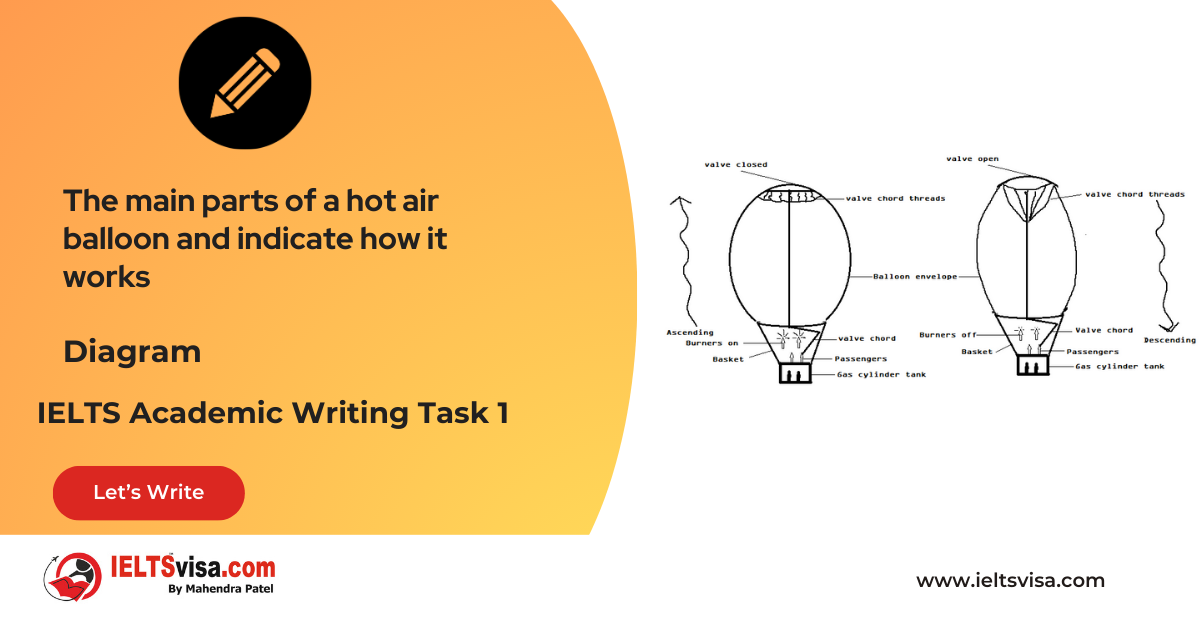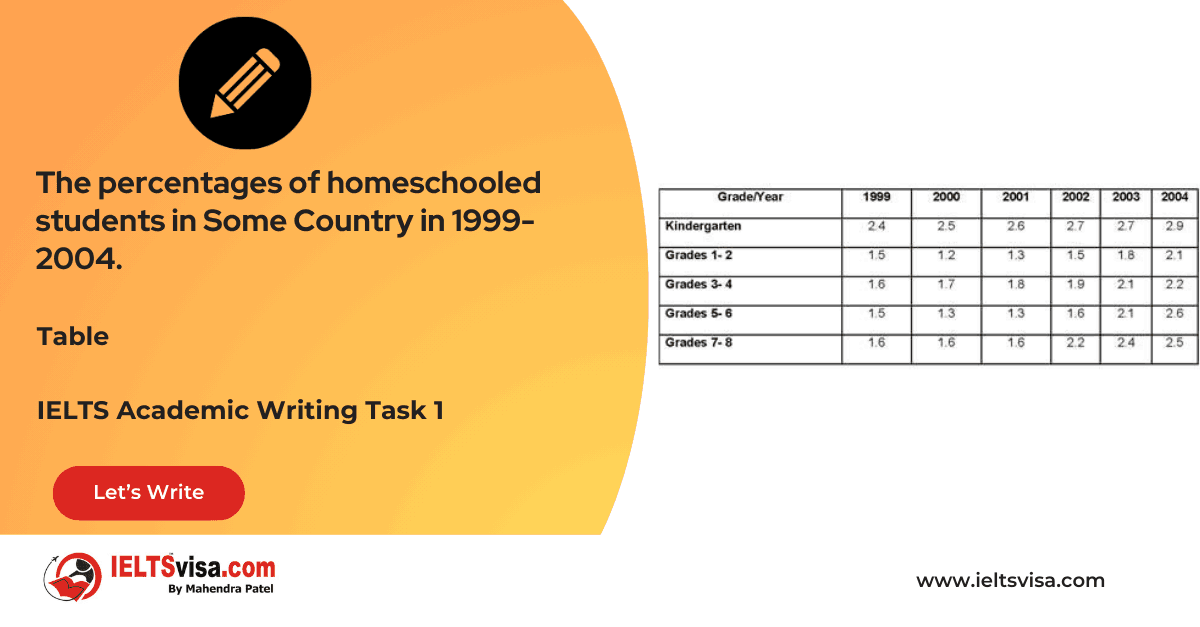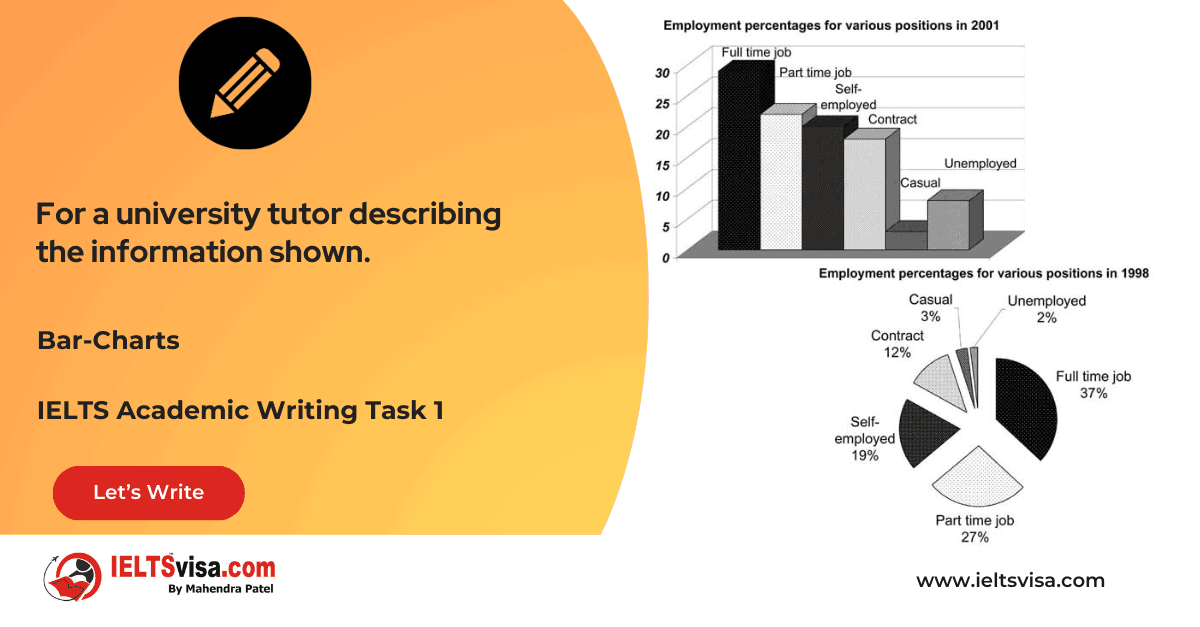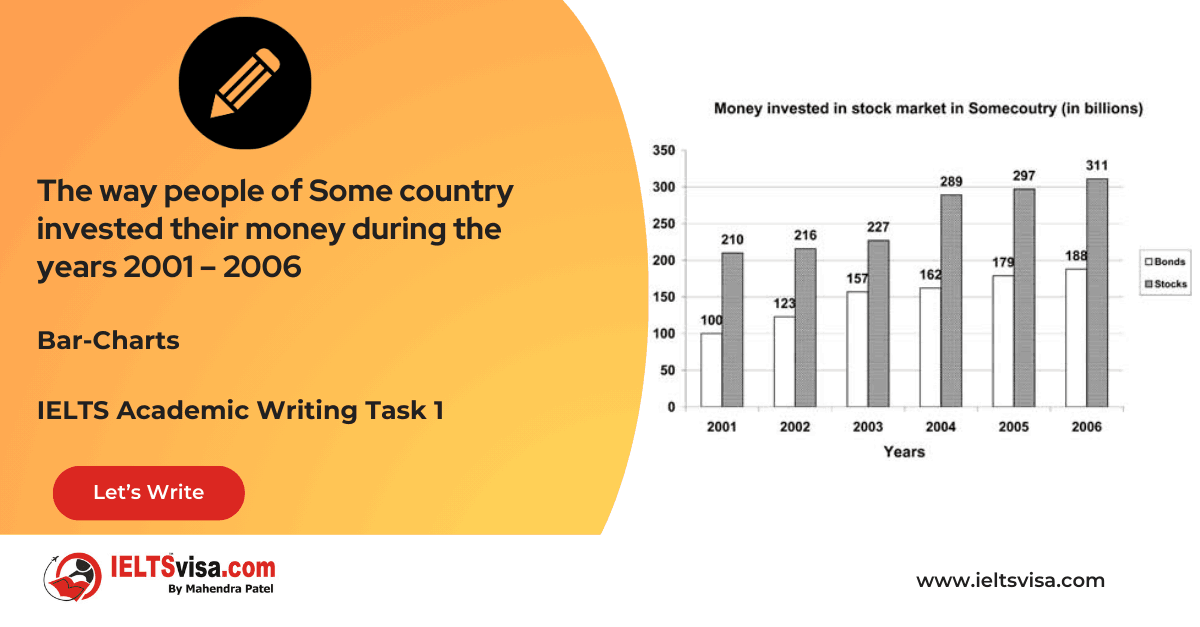The percentage of workforce employed in six industries in Australia between 1989 and 2009
IELTS Academic Writing Task 1 - Tables
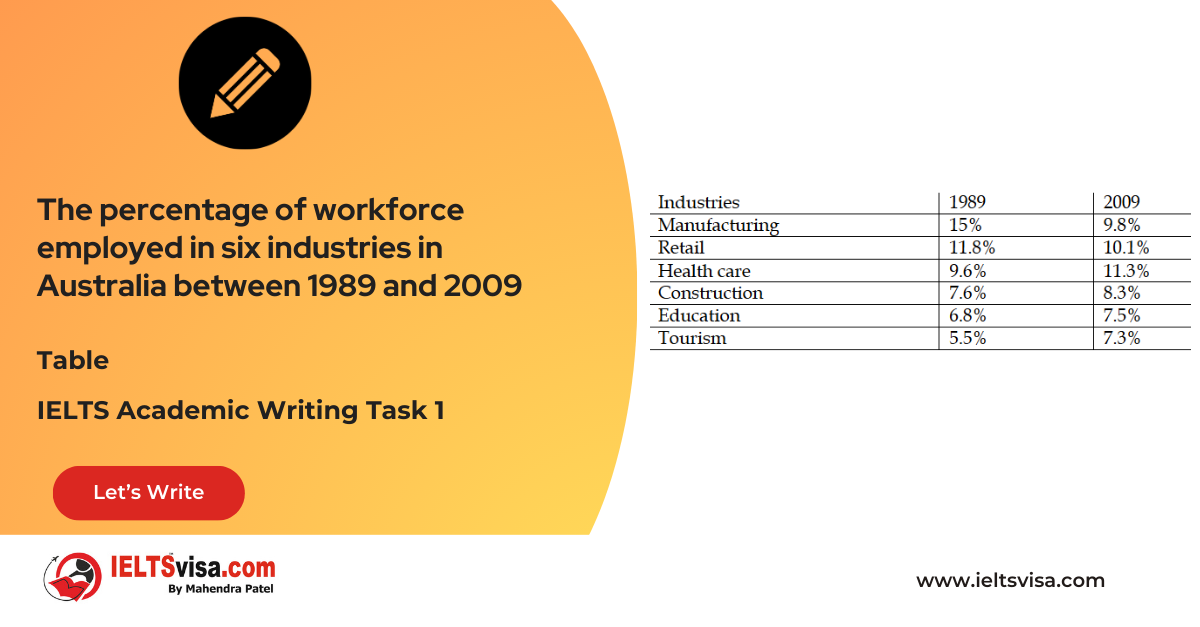
IELTS Writing Task 1 Question
The table below gives information about the percentage of workforce employed in six industries in Australia between 1989 and 2009. Summarise the information by selecting and reporting the main features and make comparisons where relevant.

Common Questions for the Table
1. Graph Type: Table
2. Title: Percentage of Workforce Employed in Six Industries in Australia (1989 and 2009)
3. What are the units of measurement?: Percentage of workforce
4. Who: Workforce employed in six industries (Manufacturing, Retail, Healthcare, Construction, Education, Tourism)
5. When: 1989 and 2009
6. Where: Australia
7. Topic: Comparison of employment distribution across various industries over two decades
Comparison Showing and Trends Any change over time (such as an increase or a decrease) is a trend.
Comparison 1 : Decline in Employment
- Details:
1. Manufacturing had the highest employment in 1989 (15%) but fell to below 10% by 2009.
2. Retail workforce reduced from 11.8% to 10.1% over the period.
Comparison 2 : Growth in Employment
Details:
1. Healthcare employment rose from 9.6% to 11.3%, making it the highest in 2009.
2. Construction, Education, and Tourism saw workforce increases from 7.6%, 6.8%, and 5.5% to 8.3%, 7.5%, and 7.3% respectively.
Sample Answer
The given table presents data on the proportion of the workforce employed in six industries in Australia in 1989 and 2009. It is evident that the manufacturing and retail sectors experienced a decline in workforce percentage over the two decades, while all other industries saw an increase.
In 1989, manufacturing had the highest workforce percentage at 15%, but by 2009, this figure had dropped by a third to just under 10%. The retail sector also experienced a decline from 11.8% in 1989 to 10.1% in 2009. Conversely, healthcare witnessed an increase in employment from 9.6% to 11.3%, making it the top industry for employment by 2009.
The construction industry grew from 7.6% to 8.3%, while education and tourism also saw growth, rising from 6.8% to 7.5% and 5.5% to 7.3%, respectively.
Overall, while manufacturing and retail lost their dominant positions over the two decades, healthcare emerged as the leading sector, with tourism remaining the smallest sector in terms of workforce share.
Top 29 Vocabulary
| Vocabulary | Type | Meaning | Synonyms | Examples |
|
Proportion |
Noun |
A part or share of a whole |
Percentage, fraction |
“The proportion of workers in healthcare increased over the period.” |
|
Workforce |
Noun |
The group of people engaged in work |
Labor force, employees |
“The workforce employed in construction rose from 7.6% to 8.3%.” |
|
Dominant |
Adjective |
Most powerful or influential |
Leading, primary |
“Manufacturing was the dominant sector in 1989.” |
|
Emerged |
Verb |
Came into prominence |
Appeared, surfaced |
“Healthcare emerged as the top industry by 2009.” |
|
Sector |
Noun |
A distinct part of the economy |
Industry, division |
“The tourism sector saw an increase in employment.” |
|
Presents |
Verb |
To show or display data |
Displays, Exhibits |
“The table presents data on workforce proportions in six industries.” |
|
Decline |
Noun/Verb |
A gradual reduction in size, amount, or importance |
Decrease, Drop |
“Retail experienced a decline in workforce share over two decades.” |
|
Increase |
Noun/Verb |
A rise in amount or size |
Growth, Rise |
“Healthcare saw a steady increase in its workforce share.” |
|
Employment |
Noun |
The state of having a paid job |
Work, Occupation |
“Tourism experienced a notable increase in employment figures.” |
|
Decades |
Noun |
A period of ten years |
Ten years, Era |
“Over the two decades, manufacturing lost its top position.” |
|
Notable |
Adjective |
Worthy of attention |
Significant, Remarkable |
“The healthcare industry showed a notable rise in workforce proportion.” |
|
Underwent |
Verb |
Experienced or was subjected to something |
Experienced, Endured |
“Manufacturing underwent a major decline over the 20 years.” |
|
Prominence |
Noun |
The state of being important or well-known |
Importance, Recognition |
“Healthcare gained prominence as the leading sector in 2009.” |
|
Leading |
Adjective |
Being in a top or most important position |
Dominant, Primary |
“By 2009, healthcare became the leading industry in employment.” |
|
Rising |
Adjective |
Increasing or growing |
Growing, Expanding |
“Education and tourism saw rising workforce percentages over the years.” |
|
Fell |
Verb |
Decreased in number, size, or intensity |
Dropped, Declined |
“The percentage of workers in manufacturing fell significantly.” |
|
Remained |
Verb |
Stayed in the same position or state |
Persisted, Continued |
“Tourism remained the smallest industry in terms of workforce share.” |
|
Observed |
Verb |
Noticed or recorded |
Noted, Recorded |
“A trend of increasing employment was observed in the healthcare sector.” |
|
Transition |
Noun |
The process of change from one state to another |
Shift, Change |
“The transition in workforce distribution was evident over the two decades.” |
|
Accounted for |
Phrase |
Represented or made up a portion of |
Comprised, Constituted |
“Retail accounted for 10.1% of the workforce in 2009.” |
|
Steady |
Adjective |
Regular, consistent, or without abrupt changes |
Stable, Continuous |
“Tourism showed a steady increase in its workforce percentage.” |
|
Dominance |
Noun |
The state of being most influential or powerful |
Supremacy, Authority |
“Manufacturing lost its dominance by 2009.” |
|
Shifted |
Verb |
Changed in direction, position, or focus |
Altered, Moved |
“The workforce focus shifted from manufacturing to healthcare.” |
|
Fluctuated |
Verb |
Changed irregularly in size or amount |
Varied, Oscillated |
“The retail workforce fluctuated slightly but showed an overall decline.” |
|
Consistent |
Adjective |
Showing regularity or conformity |
Steady, Uniform |
“The consistent rise in healthcare employment was notable.” |
|
Surged |
Verb |
Increased suddenly and significantly |
Spiked, Escalated |
“Tourism surged in workforce share from 5.5% to 7.3% over two decades.” |
|
Proportional |
Adjective |
Corresponding in size or amount |
Relative, Balanced |
“The proportional increase in healthcare outweighed declines in other sectors.” |
|
Depicted |
Verb |
Represented or illustrated visually or in words |
Showed, Portrayed |
“The table depicted a clear shift in workforce trends over 20 years.” |
|
Smallest |
Adjective |
Being the least in size, amount, or significance |
Minimal, Lowest |
“Tourism remained the smallest sector despite its growth.” |

Our Books
Master IELTS Speaking Part 1
IELTS Writing Task 1 Book
IELTS Writing Task 2 Book
Writing Task 1 Question Types
Practice IELTS Other Modules
IELTS Listening
The IELTS Listening test assesses how well you can understand spoken English in various contexts. It lasts about 30 minutes and is divided into four sections with a total of 40 questions. The listening tasks become increasingly difficult as the test progresses.
IELTS Academic Reading
The IELTS Academic Reading section assesses your ability to understand and interpret a variety of texts in academic settings. It is designed to evaluate a range of reading skills, including skimming for gist, reading for main ideas, reading for detail, understanding inferences, and recognizing a writer's opinions and arguments.
IELTS Speaking
The IELTS Speaking test assesses your ability to communicate in English on everyday topics. It lasts 11-14 minutes and consists of three parts: introduction, cue card, and a discussion based on the cue card topic.
IELTS General Reading
IELTS General Reading tests your ability to understand and interpret various types of texts. Here are some key areas and types of content you can expect to encounter in the reading section, along with tips for effective preparation.
IELTS Academic Writing Task 1
In IELTS Academic Writing Task 1, you are presented with a visual representation of information, such as graphs, charts, tables, or diagrams, and you are required to summarize, compare, or explain the data in your own words.
IELTS General Writing Task 1
In IELTS General Writing Task 1, you are required to write a letter based on a given situation. The letter can be formal, semi-formal, or informal, depending on the prompt. Here’s a breakdown of the key components to include in your letter
IELTS Academic Writing Task 2
In IELTS Academic Writing Task 2, you are required to write an essay in response to a question or topic. Here’s a guide to help you understand the essential elements of this task
IELTS Exam Tips
To succeed in the IELTS exam, practice regularly, familiarize yourself with the test format, improve your vocabulary, develop time management skills, and take mock tests to build confidence.
Grammer for IELTS
Grammar is the foundation of effective communication in English. Understanding tense usage, subject-verb agreement, and sentence structure enhances clarity and coherence in writing and speaking.
Vocabulary for IELTS
Vocabulary plays a crucial role in the IELTS (International English Language Testing System) exam, especially in the Speaking and Writing sections. Here’s an overview of why vocabulary is important and how it impacts your performance
RECENT IELTS SAMPLES QUESTIONS AND ANSWERS
Task 1 – Diagram – A conference hall built in 1981 and planned for 2020
20:00 Start Pause Stop [df_adh_heading title_infix="IELTS Writing Task 1 Question" use_divider="on"...
Task 1 – Table – The percentages of homeschooled students in Some Country in 1999-2004.
20:00 Start Pause Stop [df_adh_heading title_infix="IELTS Writing Task 1 Question" use_divider="on"...
Task 1 – Table – For a university tutor describing the information shown.
20:00 Start Pause Stop [df_adh_heading title_infix="IELTS Writing Task 1 Question" use_divider="on"...
Task 1 – Bar-Charts – The way people of Some country invested their money during the years 2001 – 2006
20:00 Start Pause Stop [df_adh_heading title_infix="IELTS Writing Task 1 Question" use_divider="on"...
Task 1 – Diagram – Rainwater Harvesting and Conversion to Drinking Water in an Australian Town.
20:00 Start Pause Stop [df_adh_heading title_infix="IELTS Writing Task 1 Question" use_divider="on"...
Task 1 – Column graph – Percentage of Young People Enrolled in Universities in 2000 and 2007.
20:00 Start Pause Stop [df_adh_heading title_infix="IELTS Writing Task 1 Question" use_divider="on"...

